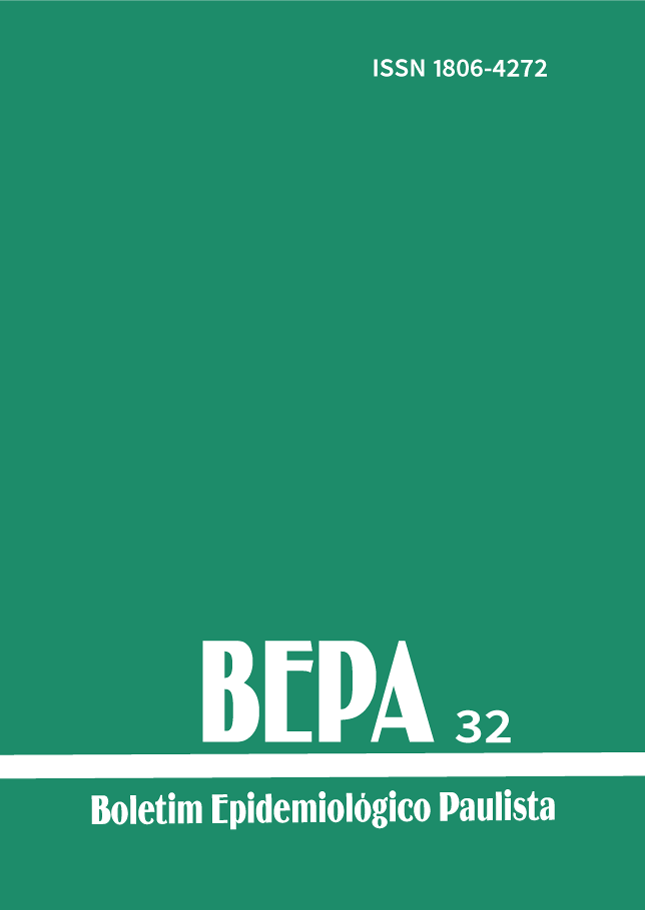Abstract
Leishmania/HIV co-infection is reported in more than 48 countries. The largest number of cases of this new nosological entity is concentrated in the Mediterranean region, and visceral leishmaniosis is the major clinical form of the disease. It occurs especially among intravenous drug abusers infected by HIV, with a prevalence rate 500 times higher than among the population who is HIV seronegative. In this proportion of co-infected, leishmaniosis transmission may occur by sharing of syringes and there are, also, atypical manifestations with the impairment of organs which, in general, are not attacked. Atypical epidemiological, clinical and therapeutic aspects of patients with HIV/Aids in this region include leishmaniosis as a disease than can define Aids. In Brazil, in some clinical situations, tegumentar leishmaniosis presents a typical opportunistic behavior, although there is no consensus to incriminate this disease as such.
References
1. Alvar J et al. Leishmania and human immunodeficiency virus coinfection: the first 10 years. Clin. Microbiol. Rev. 1997, 10 (2), p. 298-319.
2. Amato VS, Nicodemo AC, Amato JG, Boulos M, Neto VA. Mucocutaneous leishmaniasis associated with HIV infection treated successfully with liposomal amphotericin B (AmBisome). J Antimicrob Chemother 2000; 46(2):341-2.
3. Berman JD. Human leishmaniasis: clinical, diagnostic and chemoterapeutic developments in the last 10 years. Clin Inf Dis 1997, 24: 684 - 703.
4. Couppié P, Clyti E, Sobesky M, Bissuel F, Del Giudice P, Sainte-Marie D, Dedet JP, Carme B, Pradinaud R. Comparative study of cutaneous leishmaniasis in human immunodeficiency virus (HIV)-infected patients and non-HIV-infected patients in French Guiana. Br J Dermatol 2004; 151(6):1165-71.
5. Crawford JT. Epidemiology of tuberculosis: the impact of HIV and multidrug-resistant strains. Immunobiology 1994 ; 191(4-5):337-43.
6. Chicharro C, Jimenez MI, Alvar J. Ann Trop Med Parasitol. Iso-enzymatic variability of Leishmania infantum in Spain. 2003; 97 Suppl 1:57-64.
Davidson RN. – Visceral leishmaniasis in clinical practice. J Infect 1999; 39 (2):112-6.
8. Desjeux P, Alvar J. Leishmania/HIV co-infections: epidemiology in Europe. Ann Trop Med Parasitol 2003; 97(1):3-15.
9. Gramiccia M et al. Heterogeneity among zymodemes of leishmania infantum from HIV-positive patients with visceral leishmaniasis in south-Italy. FEMS microbiol. Letter 1995 apr, 128:1, 33-8.
10. Hernandez DE, Oliver M, Martinez C, Planas G. Visceral leishmaniasis with cutaneous and rectal dissemination due to Leishmania braziliensis in acquired immunodeficiency syndrome (AIDS). Int J Dermatol 1995; 34:114-115.
11. Laguna F, Garcia-Samaniego J, Soriano V, Valencia E, Redondo C, Alonso MJ, Gonzalez-Lahoz JM. Gastrointestinal leishmaniasis in human immunodeficiency virus-infected patients: report of five cases and review. Clin Infect Dis 1994, 19 (1): 48-53.
12. Laguna F. Treatment of leishmaniasis in HIV-positive patients. Ann Trop Med Parasitol 2003; Suppl 1:135-42.
13. Lambert N, Mehta B, Walters R, Eron JJ. Chagasic encephalitis as the initial manifestation of AIDS. Ann Intern Med 2006; 144 (12): 941-3.
14. Lopez-Velez R, Perez-Molina JA, Guerrero A, Baquero F, Villarrubia J, Escribano L, Bellas C, Perez- Corral F, Alvar J. Clinicoepidemiologic characteristics, prognostic factors, and survival analysis of patients coinfected with human immunodeficiency virus and Leishmania in an area of Madrid, Spain. Am J Trop Med Hyg 1998; 58(4):436-43.
15. Brasil. Ministério da Saúde. Programa Nacional de DST e AIDS. Manual de Recomendações para Diagnóstico, Tratamento e Acompanhamento da Co-infecção Leishmania-HIV. Brasília; 2004.
16. Molina R, Gradoni L, Alvar J. HIV and the transmission of Leishmania. Ann Trop Med Parasitol 2003; 97 Suppl 1:29-45.
17. Pintado V, Martin-Rabadan P, Rivera ML, Moreno S, Bouza E. Visceral leishmaniasis in human immunodeficiency virus (HIV)-infected and non-HIV-infected patients. A comparative study. Medicine (Baltimore) 2001; 80(1):54-73.
18. Posada-Vergara MP, Lindoso JA, Tolezano JE, Pereira-Chioccola VL, Silva MV, Goto H. Tegumentary leishmaniasis as a manifestation of immune reconstitution inflammatory syndrome in 2 patients with AIDS. J Infect Dis 2005;192(10):1819-22.
19. Rabello A, Orsini M, Disch J. Leishmania/HIV co-infection in Brazil: an appraisal. Ann Trop Med Parasitol 2003;97(1):17-28.
20. Ramos-Jr. A.N. Inclusão da reativação da doença de Chagas como uma condição definidora de AIDS para fins de vigilância epidemiológica no Brasil. Carta ao Editor. Rev Soc Bras Med Trop 2004; 37 (2):192-193.

This work is licensed under a Creative Commons Attribution 4.0 International License.
Copyright (c) 2006 José Angelo Lauletta Lindoso
